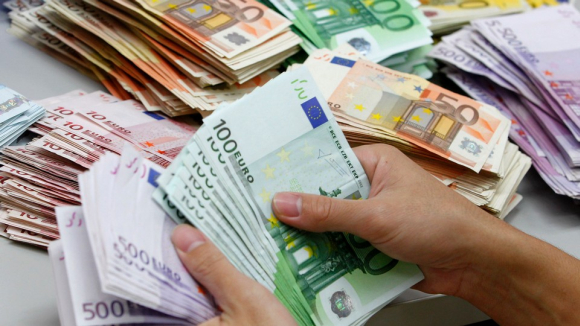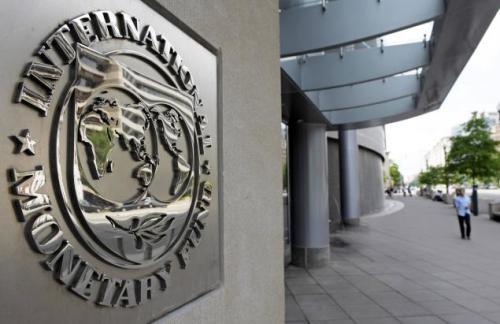 | « Back to article | Print this article |
EU's rescue plan offers temporary reprieve
On Wednesday, as European Union leaders patched together the final pieces of the plan to rescue the euro, CNBC ran a faux poll that asked the question: "How many EU leaders does it take to change a light bulb?"
That pretty much summed up the sentiment that prevailed on the eve of the summit that sought to find a "comprehensive" solution to the region's enduring fiscal crisis.
Expectations had fluctuated wildly in the run-up to the crisis but there was a deep-seated scepticism about the ability of European politicians to set aside their differences.
Click NEXT to read more...
EU's rescue plan offers temporary reprieve
Surprisingly, they proved the sceptics wrong - the plan they announced on Wednesday, might buy the region at least a temporary reprieve from its myriad problems.
More importantly, the financial markets (so critical to the success of the plan) seem to have bought into it.
What has this plan delivered? Perhaps the most important thing that has come out of it is clarity about the extent of private sector involvement in the Greek bail-out programme.
Private sector banks have, after much haggling, agreed to take a haircut of 50 per cent on their Greek bond holdings that are due for redemption till 2014.
Click NEXT to read more...
EU's rescue plan offers temporary reprieve
This is up from the 21 per cent that they had earlier agreed to. This is a meaningful reduction - going by EU projections this will reduce Greece's public debt to GDP ratio from earlier projections of 160-170 per cent by 2020 to 120 per cent. In short, it could put Greece on a more sustainable fiscal path.
These losses will be on a voluntary basis and will ensure that Credit Default Swap payments will not be triggered.
Hence, the crisis will remain contained and the spillover to US banks that have sold these CDS (basically insurance against default) on Greek debt to private bondholders will be limited.
Click NEXT to read more...
EU's rescue plan offers temporary reprieve
To compensate banks for the extra loss that they will have to incur, EU member states will contribute an additional 30 billion euros.
The second "pillar" of the deal was a recapitalisation programme for European banks.
The recapitalisation figures were based on numbers released by the European Banking Association that looked at the capital positions of banks.
The EBA announced that EU banks would need to raise a cumulative capital of around 106 billion euros.
Banks will be given up to June 2012 to raise capital privately before seeking government assistance.
However, those governments unable to shoulder the burden could force their banks to tap the European Financial Stability Fund that lies at the heart of the rescue programme.
Click NEXT to read more...
EU's rescue plan offers temporary reprieve
The question is: Is this recapitalisation scheme credible? Prima facie, it is.
At this stage, the size of the EFSF looks large enough to accommodate recapitalisation even if banks found themselves unable to tap private resources and get government support.
The third objective of the rescue plan was to ensure that the size of the EFSF is adequate to support sovereign debt of larger nations like Spain and Italy.
Anxiety about their fiscal health had meant that the market for these bonds had all but collapsed and rising yields on debt was just making their fiscal positions worse.
Click NEXT to read more...
EU's rescue plan offers temporary reprieve
EU policymakers highlighted two possible mechanisms that could be used to increase the fire power of the EFSF without actually increasing the quantum of resources available.
Under the first option, a certain amount taken from the EFSF will be used to guarantee or insure first cut losses that investors might suffer on their holdings of Italian and Spanish bonds.
The idea of providing this partial insurance is to revive market appetite for Italian and Spanish debt that would make it easier for both nations.
The second option discussed by the EU would involve using a combination of resources from the EFSF, IMF, sovereign wealth funds and even possibly China to create a special purpose vehicle that would actually increase the size of the EFSF.
Click NEXT to read more...
EU's rescue plan offers temporary reprieve
It is possible that both these options will be used simultaneously.
Markets across the board seem pleased with the fact that the measures were broadly in line with their expectations and that it contained no negative surprises.
This has triggered a massive "risk-on" phase that could take Indian equities and the rupee higher. It is quite possible that in this phases the rupee could move back to a level of 48 to the dollar and the euro 1.44-1.45.
However, is this rescue package the decisive game changer that will end all of euro zone's problems?
Click NEXT to read more...
EU's rescue plan offers temporary reprieve
Our problem with the "deal" is that it is based on a static assessment of the European situation, particularly macro-balances and bank financial positions.
One would like to remind readers of the fact that Europe is moving into a recessionary phase with even the heavyweights like Germany and France likely to show tepid growth.
The rescue deals struck with fiscally-stretched European economies (like Italy) are contingent on austerity and that, as we have seen in the case of Greece, could damage growth severely.
There is also the risk that countries like Italy could renege on their commitments. Add to this the fact that the recapitalisation demands could force banks to start de-leveraging and that could compromise the supply of credit and hurt growth further.
Click NEXT to read more...
EU's rescue plan offers temporary reprieve
Thus, while there could be temporary reprieve, the fiscal positions of a number of economies could worsen much beyond what policymakers are assuming at this stage.
Will the EU be able to put together another rescue package then?
That's a question that needs to be answered before one gets too bullish about the euro's future.
The authors are with HDFC Bank. These views are personal









